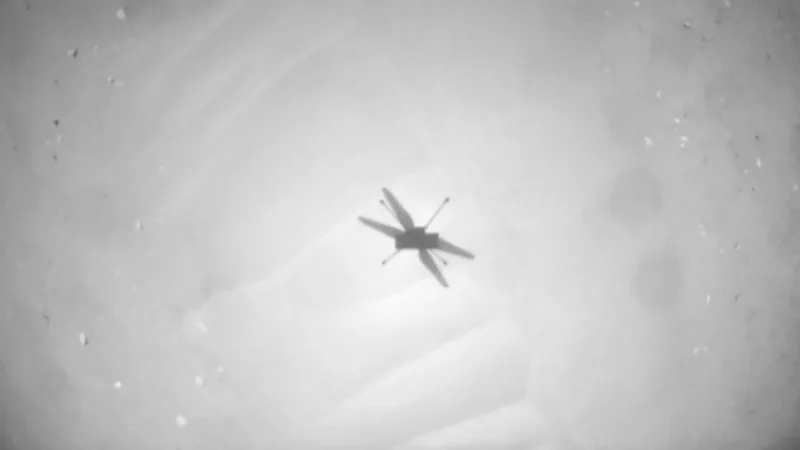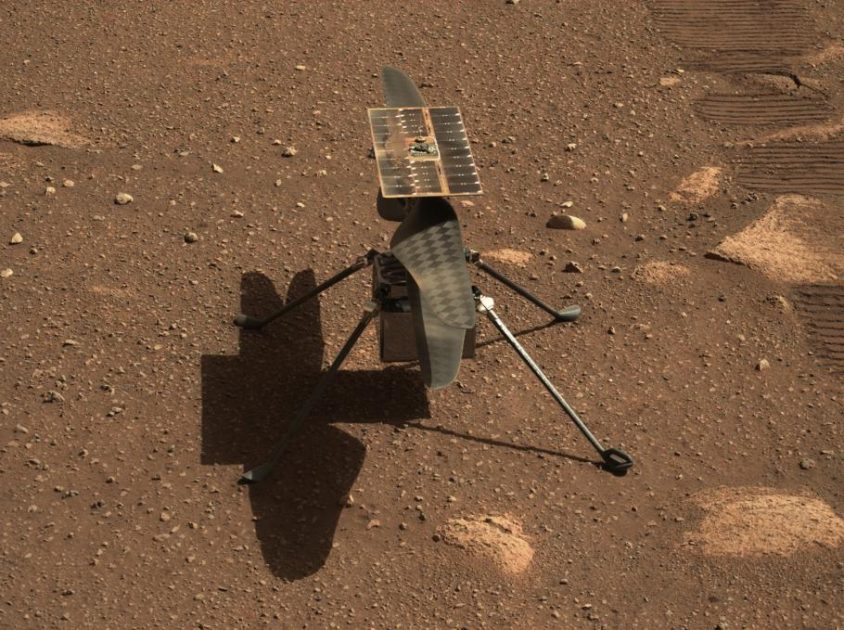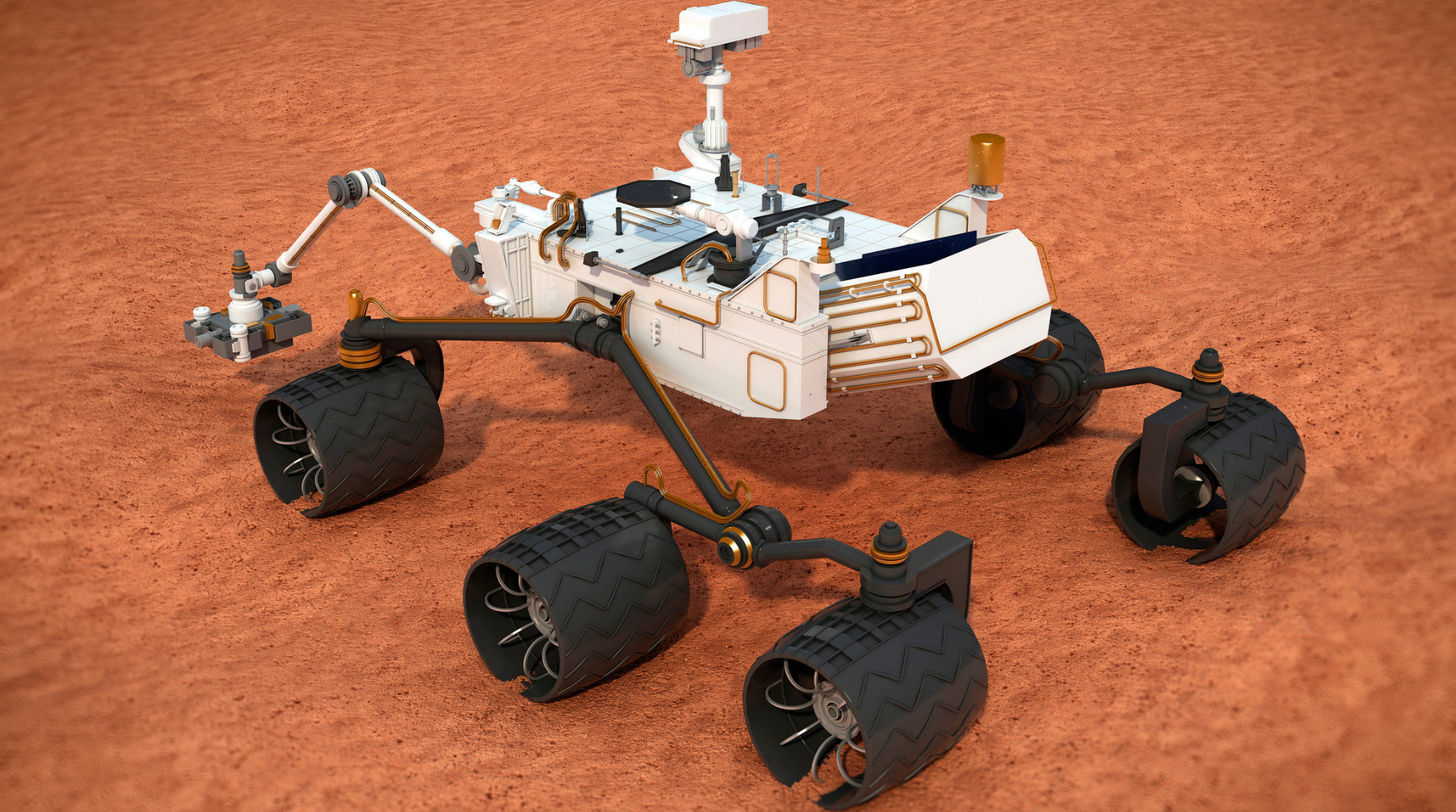NASA’s Ingenuity Mars mission: a paradigm shift in human capability

NASA’s Ingenuity Mars project, a crucial part of the has emerged as a transformative force, hitched a ride to Mars on the Perseverance rover and landed successfully on the Jezero Crater on Feb. 18, 2021. Initially anticipated for only 5-6 powered flights, the rotorcraft’s numerous successful flights in the Martian skies have firmly established this innovative craft as a catalyst for redefining conventional paradigms and dispelling longstanding notions about human capabilities within the domain of space exploration.
“Our Mars Helicopter team has embarked on unprecedented endeavors, initially fraught with uncertainties about their feasibility,” remarked MiMi Aung, who served as the Ingenuity project manager at JPL during the mission’s journey to Mars in 2021.
Since its inaugural flight on April 19, 2021, the less than 4 pounds (1.8 kilograms) helicoper has soared to astonishing altitude of 59.1 feet (18 m), and it flew a whopping 2,310 feet (704 m) horizontally on one of its sorties, far surpassing its initially planned technology demonstration of just five flights. On August 26, Ingenuity completed 56 flights, demonstrating its potential to revolutionize planetary exploration.
Remarkable achievements
The Wright Brothers Moment: Ingenuity stands as the first aircraft to achieve powered, controlled flight on another planet. This milestone, often compared to the Wright Brothers’ historic flight on Earth Dec. 17, 1903, marks a defining moment in human ingenuity.
Extensive Flight Data: The 1.6 feet (0.49 meters) tall flying object has completed 100.2 minutes of flying time, covered a distance of 8.0 miles (12.9 km), and reached altitudes as high as 59.1 feet (18.0 meters) on the thin Martian atmosphere, almost 100 times thinner than that of the Earth.
Thriving in Harsh Conditions: Operating in the extremely thin Martian atmosphere and enduring frigid temperatures as low as minus 130 degrees Fahrenheit, Ingenuity has demonstrated the tenacity and adaptability of human engineering and innovation in the face of extreme challenges in the field of space exploration.
Scouting for Perseverance: The planetary ambassador, equipped with a rotor system consisting of four carbon fiber blades arranged in two 4-ft (1.2m) counter-rotating rotors spinning at 2,400 rpm, has scouted areas of Mars, assisting NASA’s Perseverance rover in identifying locations of interest for further exploration.
Path Maker : Ingenuity’s success serves as a precursor for future aerial explorers not only on Mars but potentially in other celestial destinations, with diverse atmospheric realities, as well. It’s therefore a game-changing achievement in the history of space exploration.
These achievements are rewriting the narrative not that of impossible, but that of what is possible in planetary exploration, sparking excitement among astronomers, scientists, and philosophers alike.
Adaptability
Ingenuity’s journey has not been without its challenges, from surviving intense vibrations during launch to enduring extreme temperatures on Mars. However, the ingenuity (pun intended) of the team behind this remarkable technology is evident in their ability to adapt and innovate to overcome these obstacles.
One of the standout aspects of this mission is the incorporation of commercial off-the-shelf technology, particularly the use of a cellphone processor. This approach, born out of necessity, has proven itself in the harsh Martian environment, establishing a new precedent for future space missions. The success of off-the-shelf components demonstrates the adaptability and resilience of technology in space, reaffirming that we can trust these innovations in the most demanding conditions.

As we are celebrating the 56th flight milestone, we are forced to rethink the boundaries of what can be achieved in space exploration. The adaptability and success of Ingenuity have already begun to influence the future of Martian exploration. The concept of sample recovery helicopters, initially considered a distant possibility, has become a tangible part of the Mars sample return mission. The more-than-expected performance of Ingenuity has given NASA the confidence to consider expanding the role of rotorcraft in future missions, potentially providing unique perspectives, high-definition imagery, and access to challenging terrain.
In the words of Teddy Tzanetos, the team lead of Ingenuity Mars helicopter, “We owe it to everyone who worked on Ingenuity and everyone who will continue to work on rotorcraft on Mars to try and get everything out of this little spacecraft that we can.” And indeed, we have only scratched the surface of what is possible in the field of space exploration.
Auto Amazon Links: No products found.


